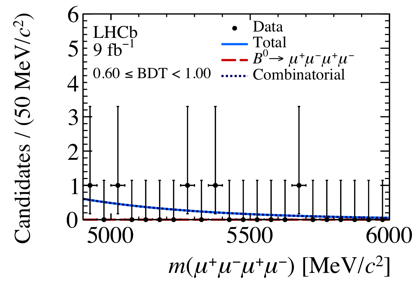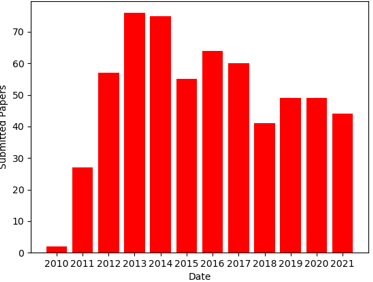The LHCb collaboration has submitted its 600th publication! The first LHCb paper was submitted in August 2010, and since then 50 to 70 papers were submitted per year, about one every week. The 500th paper was submitted two years ago. All LHCb papers are accessible on the arXiv and are published Open Access. The image below to the left shows the number of papers submitted by LHCb every year.

Every step of data analysis is discussed within a corresponding physics working group. Once the results of the analysis are considered sufficiently mature, the Review Committee (RC) is nominated, which evaluates in detail all the different features of the analysis. After approval by the RC authors present their results to the whole LHCb collaboration asking for a permission to write a paper. In case of positive reaction the draft of the paper is then circulated within the collaboration. Comments and suggestion are then included in the second draft, which also circulates within the collaboration, in order to view the paper after the changes were made to the first draft. The whole procedure is supervised by the Editorial Board which introduces also necessary corrections before the paper is submitted to arXiv and to scientific journal at the same time.
The 600th paper reports the search for the Bs0 and B0 meson decays into four muons. These decays are very rare in the Standard Model of particle physics, however, new particles beyond the Standard Model may significantly enhance the decay rates. In particular, these new particles could explain g-2 anomaly or flavour anomalies discussed often at this web page. No evidence for the decays serched for in this analysis have been found, see a typical image above to the right showing no accumulation of events around the Bs0 or B0 meson mass, and the corresponding limits have been set. The limit for the B0→μμμμ decay is 1.8×10-10, the lowest limit ever achieved by LHCb. Note that only 5 events are visible in the plot selected from the whole data sample collected by LHCb during Run 1 and Run 2. The paper is dedicated to our colleague Alexey Vorobyev who recently passed away. He played a major role in the design and construction of the LHCb muon chambers, which were essential in obtaining the very precise results announced today.

